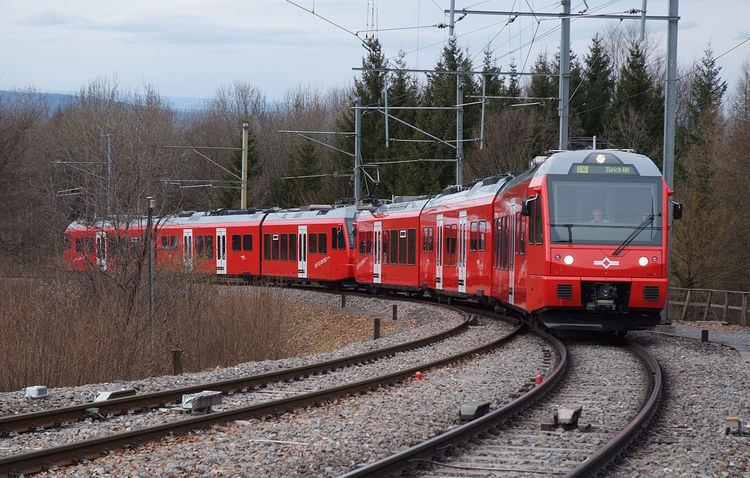Quantity 6 Year(s) of manufacture 2013–2014 | Axle arrangement 2’Bo’Bo’2’ | |
 | ||
Number(s) Be 511–516UIC numbering94 85 7 552 511-8 ... 516-7 Track gauge 1,435 mm (4 ft 8 ⁄2 in) standard gauge | ||
Class SZU Be 510 designates a EMU of the Swiss railway Sihltal Zürich Uetliberg Bahn (SZU), procured for the Uetliberg railway. These EMUs can operate on the DC Üetliberg line and on AC lines such as the Sihl Valley line. No other multi voltage equipped motive power shall be deployed, as SZU intends to change over to all AC operation.
Contents
History
The Be 510 EMUs were developed by Stadler Rail for the special requirements of SZU. Sihltal line and Uetliberg line have different railway electrification system but the two lines share the double track from Zurich Giesshübel through the underground Selnau station into the station under Bahnhofplatz, track 21 and 22 of Zurich main station. Whilst the Sihltal line uses the 15 kV AC system like all SBB lines, the Uetliberg line has an 1.2 kV DC overhead line which, looking uphill, is shifted 1.3 m (4 ft 3 in) to the right of track centre. Previous electric trains can run under one voltage only, AC trains collect power from the centre overhead, DC trains from the off centre contact line. The Be 510 trains were bought for the Uetliberg line, but to allow flexible operation and considering plans to convert the Uetliberg line to AC electrification, a multi system EMU was specified. With the pantograph in the centre standard 15 kV AC is drawn. The pantograph moved to the right allows collection of 1200 V DC, the unique supply up the Uetliberg line. These six EMUs are intended for the transition of the Uetliberg railway to AC overhead, future trains will be AC only. A current benefit of AC capability is that the new EMUs can be parked away from the DC depot, space there being scarce.
Technical description
Each set consists of three car bodies, the middle has two motored bogies. Both end cars have one non-motored bogie at the outer end, are supported by the middle car at the inner end, like a Stadler GTW. All cars have low floor sections at the doors, raising over the bogies. Access from the platform is at level.
Traction equipment is concentrated in the middle car. Designing the car body strong enough to support transformer and air conditioning equipment on the roof whilst limiting the weight proofed difficult, delaying delivery by about a year. Each end car has a driving positions and a pantograph. To allow lateral movement each pantograph is mounted on a sledge. At standstill the sledge can be moved by 1.3 m (4 ft 3 in) from the centre to the side. Contacts on the sledge will engage with fixed contacts on the car roof to root the current to either AC (centre position) or DC equipment. The pneumatic cylinder allows movement to the right only, but, should the EMU be turned, provision has been made for movement to the other side, with simple intervention at the workshop.
The vehicles can circulate on the entire 15 kV AC network of the Swiss railways. They are equipped for multiple unit operation of up to three car sets. Platform restrictions limits train length to 100 m (328 ft 1 in) (two sets), normal operation on the Uetliberg line (S 10) is a rake of two Be 510 sets.
